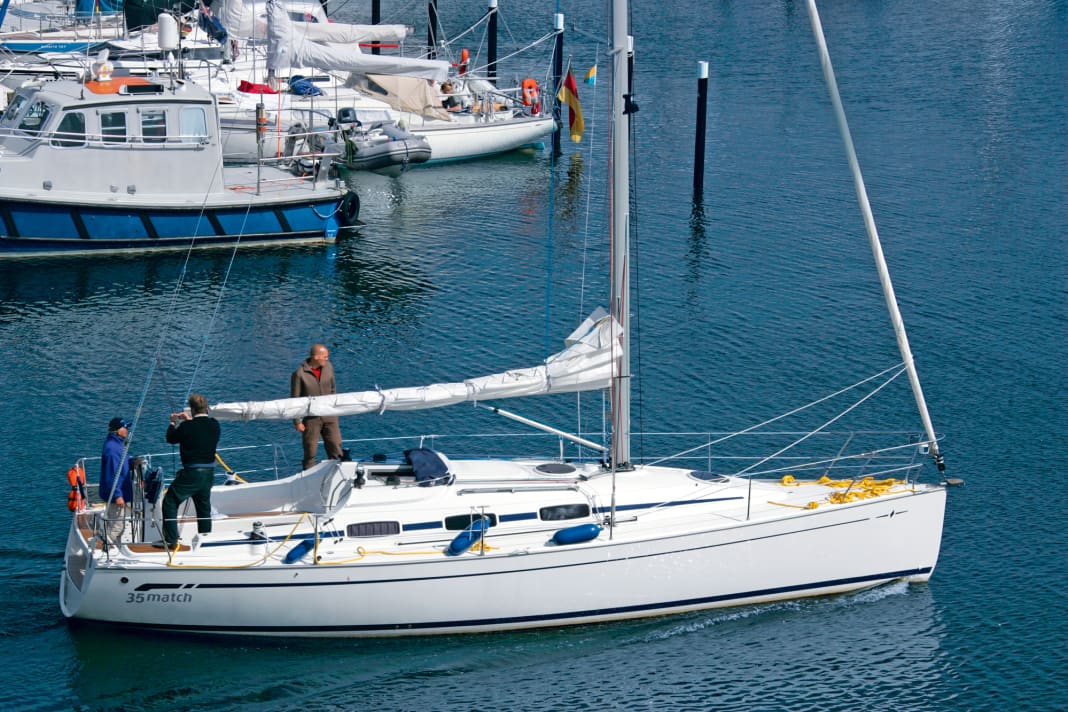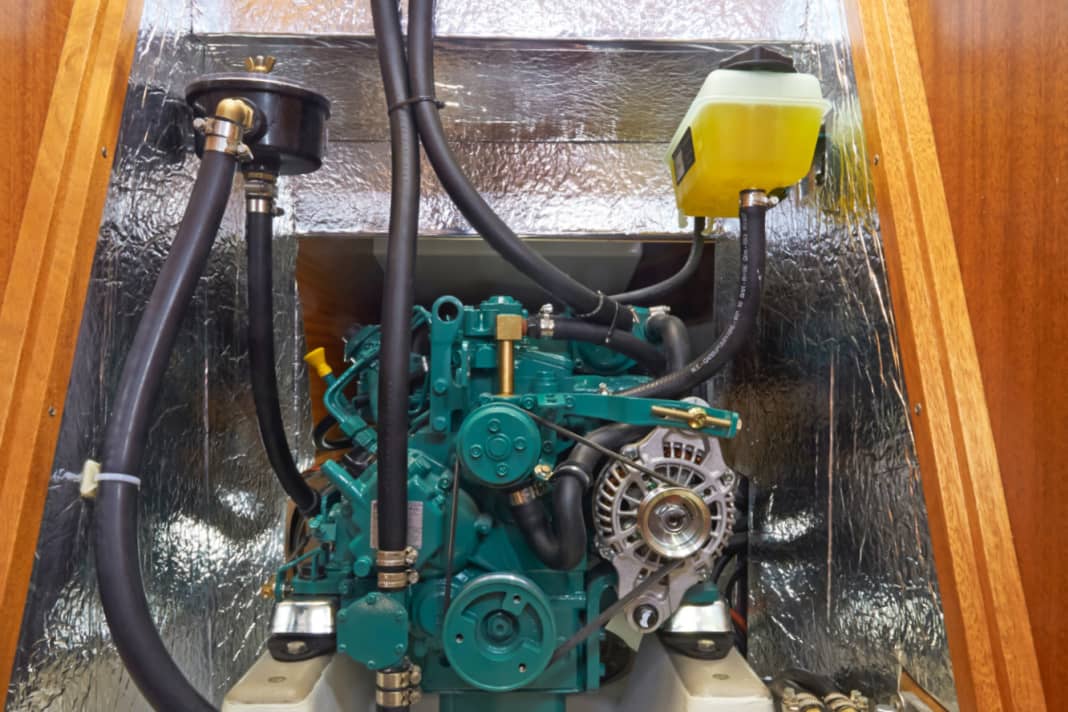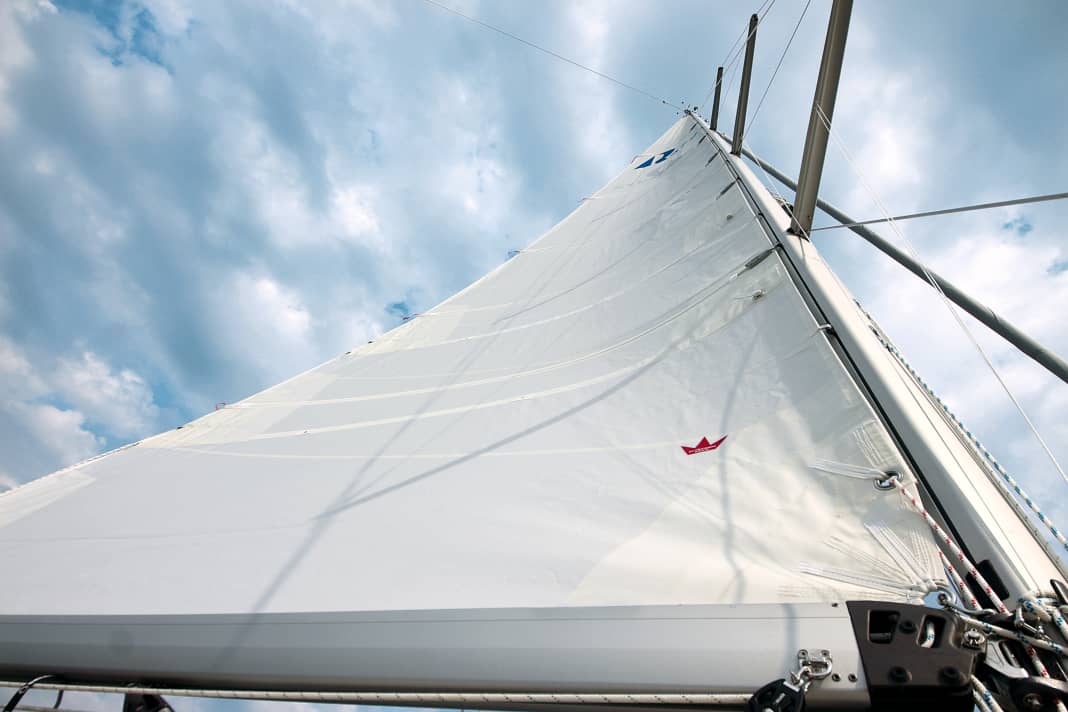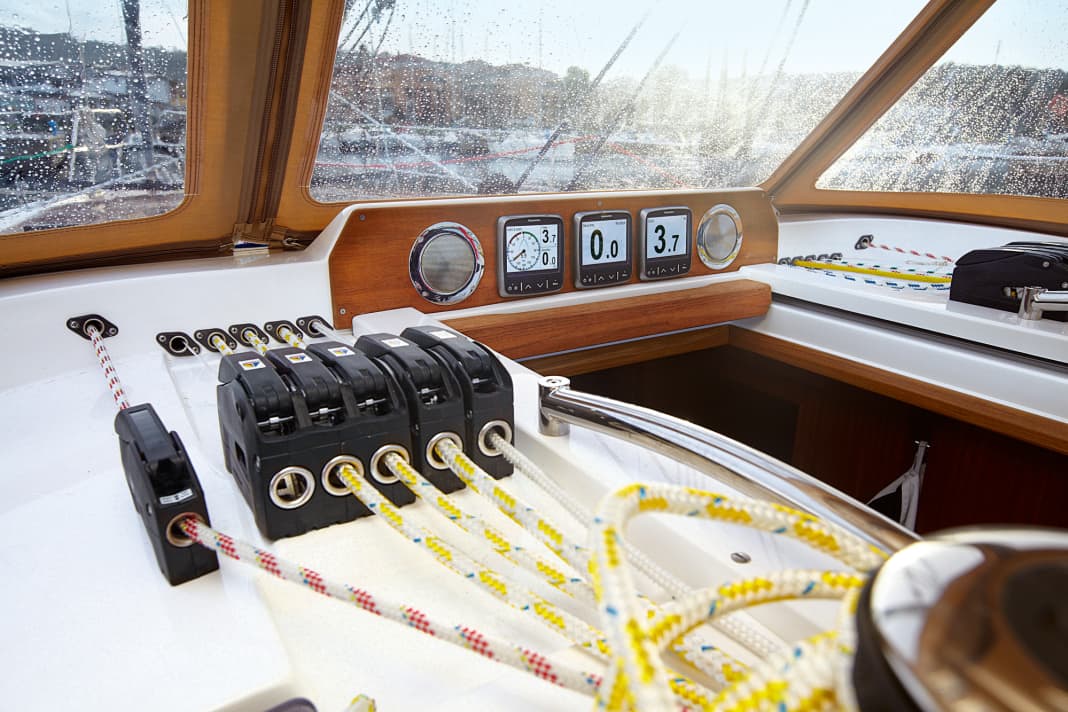Technology: What you should look out for on your first sailing trip in spring
Michael Rinck
· 02.04.2025






The season has begun, the boat is finally back in the water and ready to go. It makes sense to check all the functions before the first long trip at the latest, so that there are no nasty surprises at sea. After all, the crew must be able to rely on the boat. It is particularly advisable to check all technical functions if work has been carried out on certain systems during the winter. This is best done during a sea trial, so there is time to rectify any problems before the peak season. A test drive is particularly important for potential second-hand boat buyers.
Test drive is to be taken literally, not everything can be checked in the box or on land. Instead, it's time to cast off! But first things first. Sailing boats are extremely complex; in case of doubt, it depends on just one bent split pin whether the mast stands or falls. Countless little things can spoil the first trip or even lead to dangerous emergencies at sea. It is therefore important to proceed in a structured manner. Safety should be prioritised over comfort features. It is better to quickly identify a leaking sea valve than a broken fridge light. It is also easier to proceed in categories and look at the areas of boat construction, propulsion, rigging, electrics and installation separately.
More about the trial cruise:
Check the bilge first
The first look is into the bilge. This is standard under the crane, but it is also worthwhile for a boat that has been afloat for some time. A little water does not have to be a direct alarm signal. However, it is important that you notice any difference when you take a second look after the sea trial. Also check the engine bilge to see whether the engine is leaking oil, coolant or fuel during the journey.
The keel bolts are also located in the bilge. Here it is particularly important to take a close look during the first inspection. Subsequently applied sealant, for example, is an alarm signal. Check sea valves for corrosion, traces of water and ease of operation. Don't forget the hose connections - are the clamps tight? The lower beams of the jetties can usually be found behind the saloon cushions or in a storage space. Leaks are a frequent problem; systems with tensioners must be properly tightened. A look at the steering system can show whether the rudder bearings have too much play (anything more than two millimetres is not good) and whether the steering cables have enough tension on systems with wheels.
Does the machine work?
When it's time for the test drive out of the pits, the first thing to focus on is the diesel drive. Does the engine start well? Does a jet of cooling water come directly from the exhaust and what do the exhaust gases look like? When the engine is cold, there may be a little more exhaust, but only briefly and neither white nor very black. The former indicates unclean combustion and the latter indicates an engine that is burning too much oil. You can try starting with the rudder down and stopping directly in the harbour. This will show whether the desired performance is achieved promptly. Outside the harbour, set the engine to cruising speed, i.e. about 75 percent of maximum speed. Here the speed should reach approximately hull speed. If it is significantly lower, either there is not enough power from the drive or the propeller does not suit the boat. Another interesting aspect is how the engine sounds. It should run smoothly, with low vibrations and little noise. If there is a problem with this, there can be several causes. A clogged fuel filter, for example, does not let enough diesel through and the engine stutters. But worn engine mounts can also cause unpleasant vibrations.
Checking the engine





Check the rig at the mooring
The rig is best inspected at the mooring. Climbing into the mast can be helpful for this. Cotter pins, bolts, screws, terminals and especially the crimps and the wire above them are places where problems can occur. If a single card is sticking out of the shroud, the wire must be replaced. Corrosion in places where stainless steel fittings are attached to the aluminium profile is an alarm signal. The sails are then set on the water. It is desirable that the halyards run smoothly. If it is difficult, it may be due to unkempt sliders, broken bearings in deflectors on the mast and organisers or old and stiff ropes.
Winches, clamps and other fittings are inevitably tested on the first stroke under sail. Do the winches make a clean clicking sound? If it sounds strange or if they turn with difficulty, maintenance is long overdue, but this is not a major problem. The ropes and of course the cloths are more expensive. If all the lines are already greenish and rather stiff, replacement is unavoidable. Especially for halyards and sheets, ropes with little stretch are ideal and correspondingly expensive. Check the condition of the sails and the condition of the material: Seams, leech lines, webbing, thimbles, batten pockets. In the case of furling genoas, also take a closer look at the UV protection and the furling system. Is it easy to roll up? The guide rollers of the reefing line on the railing supports all the way aft are also crucial here.
On the water with some pressure in the sails, it also helps to look along the mast. Even if it is standing straight in the harbour, unfavourable rigging trim appears under load. An S-shaped bend to the side or loose lee shrouds are clear signs.
If there are other sails on board that have not been struck, it is important to get an overview here too. If there is not enough time on the water to set them, they can also be spread out below deck and particularly stressed areas can be inspected.
It is also easier to judge the rudder system under sail than with the engine running. When powered by the propeller, a slight jerking can be normal, but under sail it indicates a problem.
Checking the sails






Electrics and installation
Back in the harbour, don't forget to take a second look under the engine. Next on the agenda are the electrics and installation. The condition of the batteries can only be assessed indirectly via the voltage. Anything below 12 volts indicates that the energy storage unit is defective. If the engine is running and the alternator is charging, the voltage should not exceed 15 volts. If a battery monitor is connected, the state of charge of the battery can be determined much more precisely. A lead-acid battery is usually at the end of its life after five years. Check the wiring and fuse protection (including the shore connection) and check for loose or corroded contacts. Furthermore, simply switch on all consumers by way of a test. Do the lights, refrigerator, navigation electronics and pressurised water pump work? Continue with aspects of the installation. What does the water that comes out of the tap look like? Is it clear and odourless, or does it foam and smell bad? The latter would mean that the tank needs to be thoroughly cleaned. A look into the maintenance opening reveals even more. In addition, the diesel tank, gas system, heating, toilet and faeces tank as well as the ease of movement of hatches and their tightness must be checked.
Checking the power supply and electrics as well as the tanks, hoses and pumps






Checks on a charter yacht
The Takeover and control of a charter yacht requires a test drive. Here, of course, the sails must be checked in the same way, as many things are similar. However, the charterer must pay attention to very specific points. For example, damage to the bathing platform due to unsuccessful reverse mooring manoeuvres or equipment that is used a lot, such as the electric anchor winch, the dinghy and the outboard motor. The charter yacht also includes items that are otherwise not necessarily part of the boat as personal equipment, such as life jackets, safety lines and nautical charts. But even seemingly banal everyday items such as crockery and cutlery should be complete.
There is no difference when it comes to safety-related issues such as propulsion, keel bolts and rudder system. Whether charter or purchase, the keel and underwater hull must also be inspected. When Charter boat This is usually done by a diver appointed by the base, and diving can also help with a private test drive. If the water is too cold, a crane appointment must be arranged. The costs are well invested. Either in peace of mind that the keel-hull connection, keel leading edge (running aground damage), saildrive, lower rudder bearing and antifouling look great, or they save you from a bad purchase and countless hours in the boatyard.
After every test drive, the to-do list is drawn up and then it's off into the season in high spirits. Or, if you're thinking of buying, off to the next boat.

